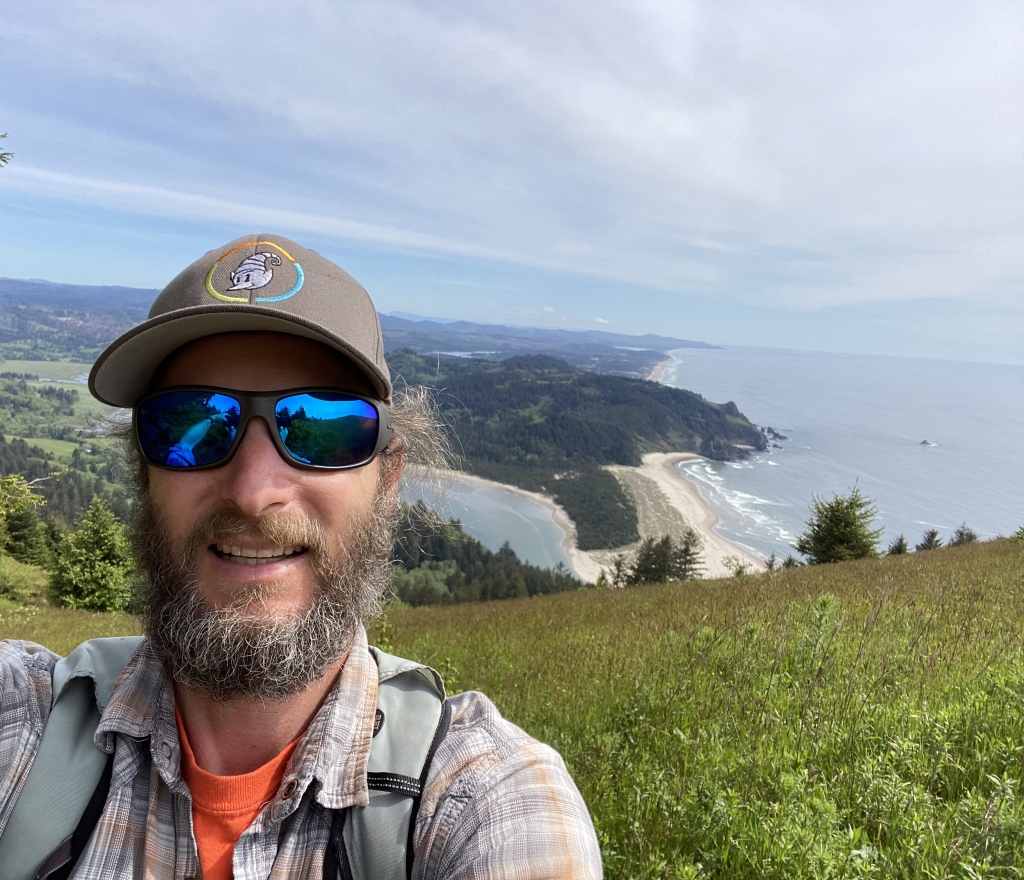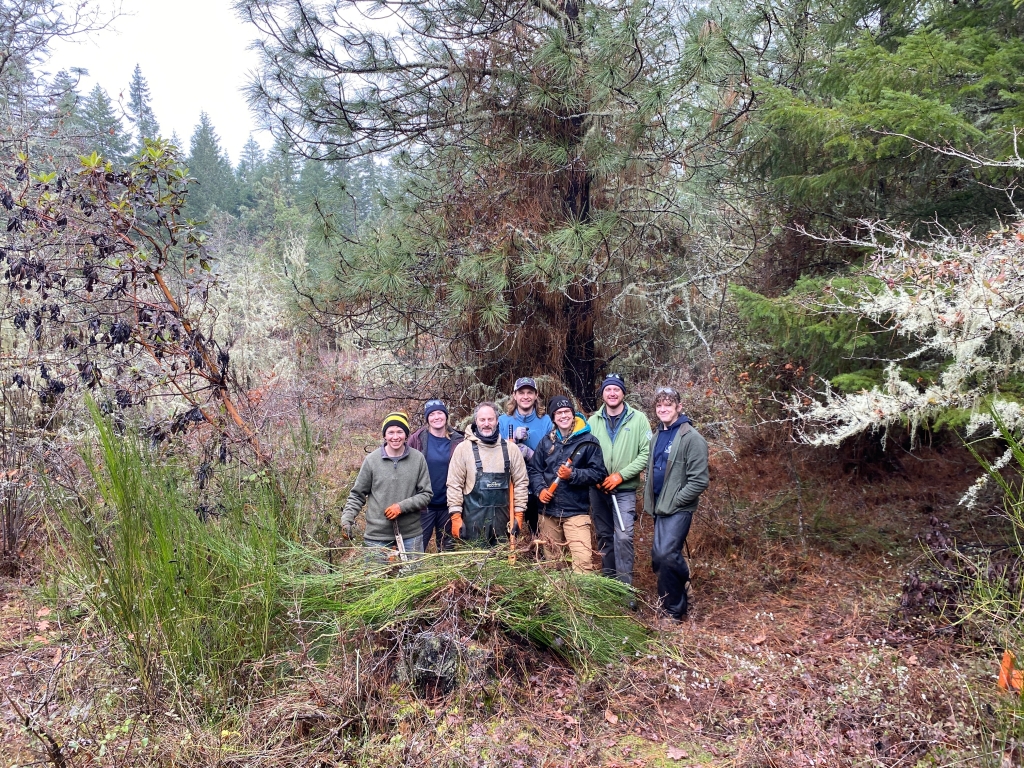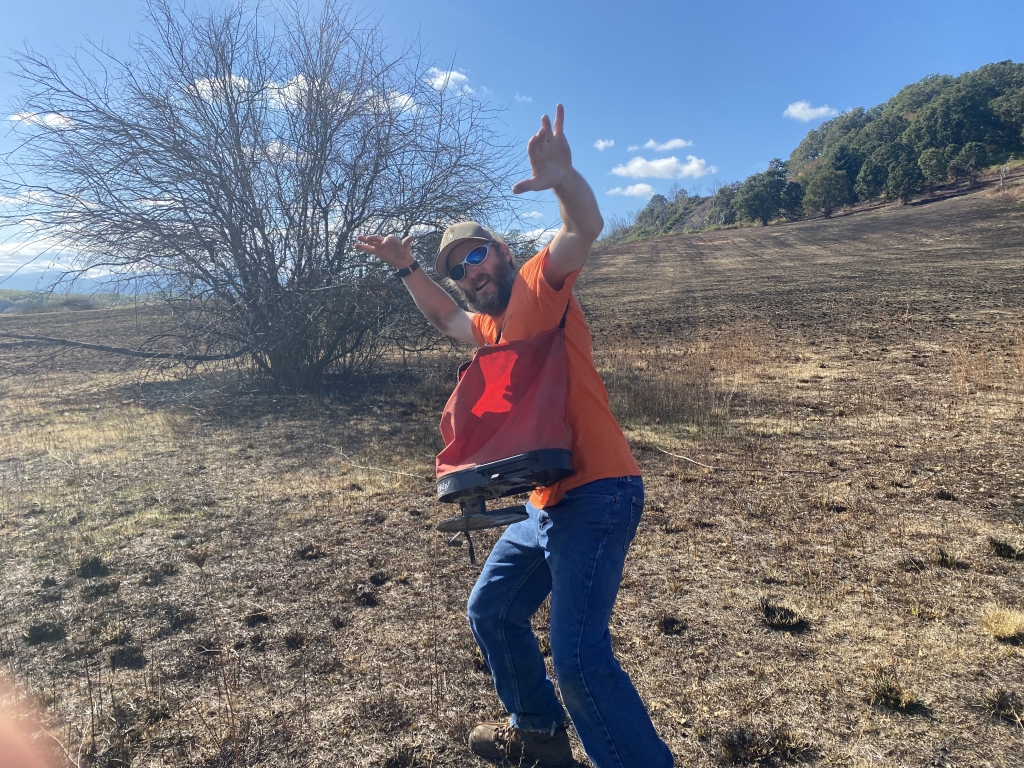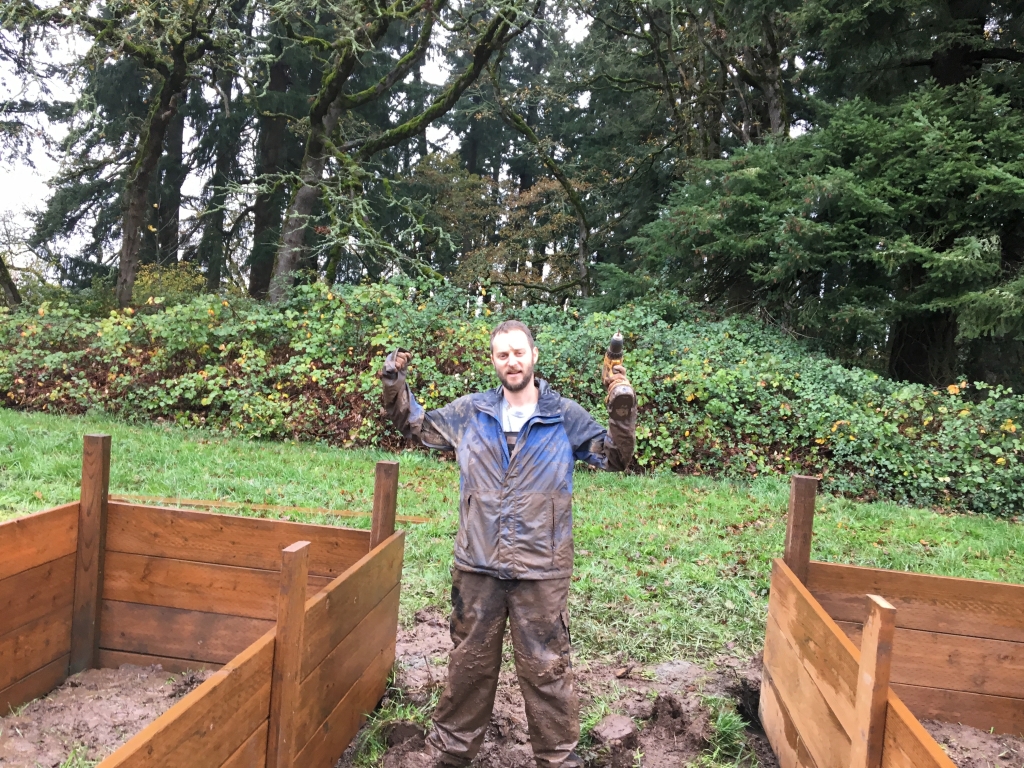by Andrew Esterson, February 2025
I recently turned 43. For some, that might be a great time for a mid-life crisis. For me, it has been a time of reflection, growth, and a whole lot of gratitude. I am so lucky to be healthy, to have an amazing family and great friends, and have had the opportunity to work at IAE for the last decade (full disclosure I did have a brief six-month stint away from IAE, but that is a whole other story). During my tenure at IAE, I have worked with our Conservation Research Program surveying rare flora in the Tygh Valley, Willamette Valley and along the Oregon Coast. I helped the Plant Materials Program establish two native seed farms (they even let me drive the combine!), and for the last eight years I have worked in the Habitat Restoration Program in our Oregon office as a Restoration Ecologist and am currently the Habitat Restoration Program Director.

Everyone has reasons for staying at a job. I believe 100 percent in our mission to conserve native species and habitats through research, restoration, and education—and I love working outside in beautiful places. Preventing pollinators and native plants from going extinct is important to me, and I am so proud of the work IAE has done in this space. In fact, in the last few years our efforts—along with those of numerous partners—has led to the delisting of Bradshaw’s desert parsley (Lomatium bradshawii), Golden paintbrush (Castilleja levisecta), and Nelson’s checkermallow (Sidalcea nelsoniana), and the downlisting of Fender’s blue butterfly (Icaricia icarioides fenderi) under the Endangered Species Act.

That said, believing in IAE’s mission and enjoying the work I do are not the primary things that keep me around. It is the culture and people: past and present IAE colleagues and board members, the vast array of partners including federal employees, tribes, state, county and city officials, Soil and Water Conservation (SWCD) staff, land trusts, contractors, private landowners, donors, and volunteers. It is rare to find such a large network of folks who genuinely care for the work they do, and are committed to building a stronger community together. Personal agendas are set aside, a ‘can-do approach’ is evident, kindness is rampant, and friendships are forged. As a result, progress is made on-the-ground to recover species, and save ecosystems.

Over the last decade, we have made significant progress restoring ecosystems and recovering species across the West. Together we have:
- Planted over 650,000 native forbs
- Sowed over 11,000 pounds of native seed
- Planted 127,000 plugs of threatened and endangered species
- Sowed over 350 pounds of threatened and endangered species seed
To complete this work, volunteers with IAE contributed over 24,800 hours of their time to restoration projects. These are remarkable achievements, and everyone involved should be proud of what we have accomplished! As I think about the future, and how our organization will navigate the next few years, anxiety is present—but far more noteworthy is a feeling of confidence and pride. We have confidence that our experience, creativity and commitment to IAE’s mission will guide restoration actions—and we will continue to make progress improving habitat quality and recovering rare species across Oregon, the Southwest, and beyond. I feel pride in the fact that we will stick to our convictions, and continue to be a leader in science-based, solution-oriented ecological restoration and conservation.

I am grateful to continue to lead IAE’s Habitat Restoration Program and work with a team of professionals who are dedicated to their craft. I am also humbled by the generosity of our partners, volunteers, and donors who have helped us—and continue to support us—through these uncertain times. Working together, I am optimistic that our spirit of community and commitment to conservation will prevail—and together we will respectfully steward the land. I’m looking forward to another decade with IAE—Cheers!
